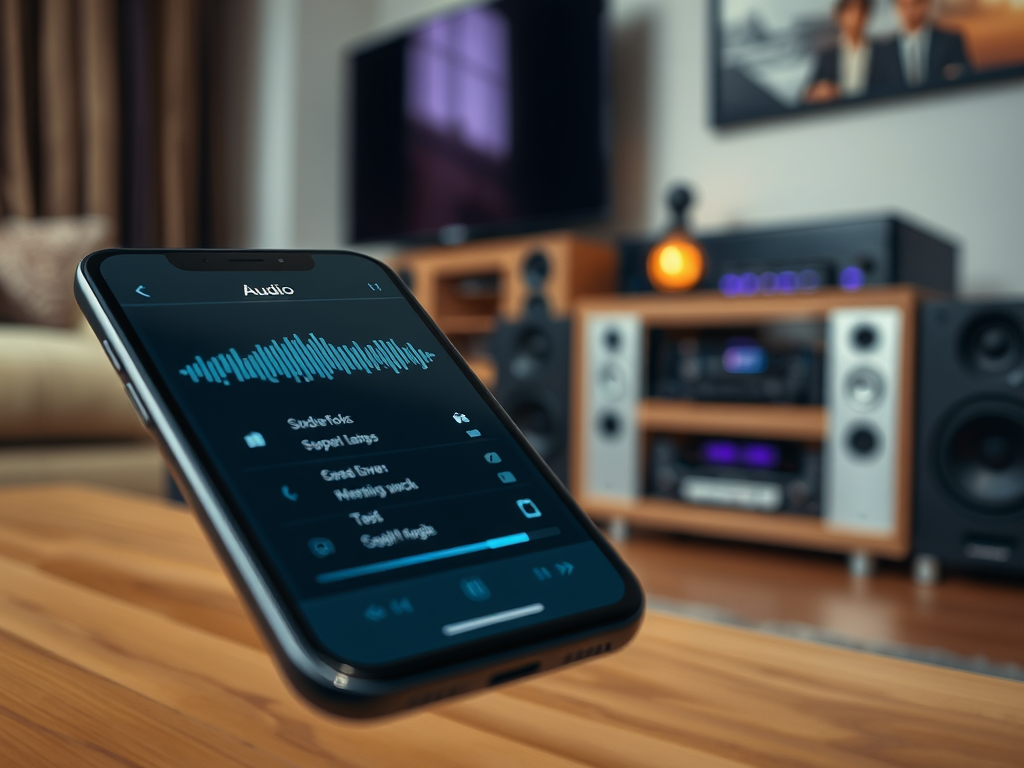3D audio technology is revolutionizing the world of entertainment, offering an immersive sound experience that dramatically enhances how we consume media. Whether it’s movies, video games, or virtual reality (VR), 3D audio creates a spatial soundscape that brings content to life, making the audience feel as if they are at the center of the action. This article delves into the transformative impact of 3D audio on various entertainment mediums and explores how this technology is reshaping user experiences.
Enhanced Movie Experiences

One of the most noticeable impacts of 3D audio can be seen in the film industry. Traditional stereo sound offers a left-right auditory experience, but 3D audio takes this a step further by adding dimensions of height and depth. This means that sounds can come from above, below, and all around, creating an auditory three-dimensional space. Filmmakers are using this technology to draw viewers deeper into the storyline, making action sequences more intense and emotional moments more poignant.
The adoption of 3D audio in movies also enables better storytelling. Directors and sound designers can use spatial audio cues to guide the audience’s attention, heightening suspense or emphasizing important plot points. The result is a more engaging and captivating cinematic experience.
Immersive Gaming Environments
The gaming industry has eagerly embraced 3D audio, using it to create incredibly immersive virtual worlds. When players can hear footsteps behind them or the distant hum of machinery, the game feels more real and the player feels more involved. 3D audio provides a significant competitive advantage in multiplayer games, where spatial awareness can mean the difference between victory and defeat.
Moreover, game developers can craft unique soundscapes for different levels or environments, adding layers of depth to the game. With the aid of 3D audio, designers can create a more effective ambiance, whether it’s a bustling city, a tranquil forest, or a haunted house. This immersion can make the gaming experience more memorable and enjoyable.
The Role of 3D Audio in Virtual Reality
Virtual Reality (VR) relies heavily on 3D audio to create truly immersive experiences. In VR, the visuals are only part of the equation; sound is equally crucial. 3D audio helps simulate a real-world environment by providing realistic audio cues that match the visual stimuli. This synchronization enhances the sense of presence, making users feel like they are genuinely in a different world.
For instance, in a VR simulation of a rainforest, users can hear the sound of birds chirping above, the rustle of leaves beside them, and a distant waterfall. This multi-dimensional audio experience is key to making VR believable and effective, whether for gaming, training simulations, or virtual tours.
Streaming Services and 3D Audio
Streaming platforms are also adopting 3D audio to enhance user experience. Services like Netflix and Amazon Prime Video are beginning to offer content with Dolby Atmos, a popular 3D audio format. This technology allows viewers to experience movies and TV shows with cinema-quality sound right from their living rooms.
Beyond movies, streaming services are exploring 3D audio for music and podcasts. Artists and producers are experimenting with spatial audio to create songs that envelop the listener in sound, offering a more profound and immersive listening experience. Similarly, podcasters are using 3D audio to craft more engaging and realistic audio stories.
List of Key Advantages of 3D Audio in Entertainment
- Enhanced immersion and realism in various media types.
- Improved storytelling through spatial audio cues.
- Competitive edge in gaming with better spatial awareness.
- Increased audience engagement in VR environments.
- High-quality sound experiences in streaming services.
Conclusion
The impact of 3D audio on entertainment is profound and far-reaching. It enriches movie experiences, making them more immersive and emotionally impactful. It provides gamers with a competitive and enjoyable edge, while in VR, it creates highly believable virtual environments. Streaming services are leveraging this technology to offer viewers and listeners top-notch audio experiences. As 3D audio continues to evolve, we can expect it to become an even more integral part of our entertainment landscape.
FAQs
What is 3D audio?
3D audio is a technology that creates a three-dimensional soundscape, allowing sounds to come from various directions, including above, below, and all around the listener, enhancing the sense of spatial awareness and immersion.
How does 3D audio improve gaming experiences?
3D audio improves gaming by providing spatial cues that enhance situational awareness, making the game world feel more real and engaging. It can be crucial in multiplayer games where knowing the location of sounds can provide a competitive advantage.
Is 3D audio available on streaming services?
Yes, several streaming services like Netflix and Amazon Prime Video offer content with 3D audio formats such as Dolby Atmos. This enhances the viewing experience by providing cinema-quality sound at home.
Why is 3D audio important for VR?
3D audio is crucial for VR because it enhances the sense of presence by providing realistic audio cues that match the visual environment. This synchronization makes virtual experiences more believable and immersive.
Can 3D audio be used in music production?
Absolutely, artists and producers are increasingly using 3D audio to create more immersive and engaging music experiences. This technology allows listeners to feel surrounded by sound, adding depth and dimension to music.



